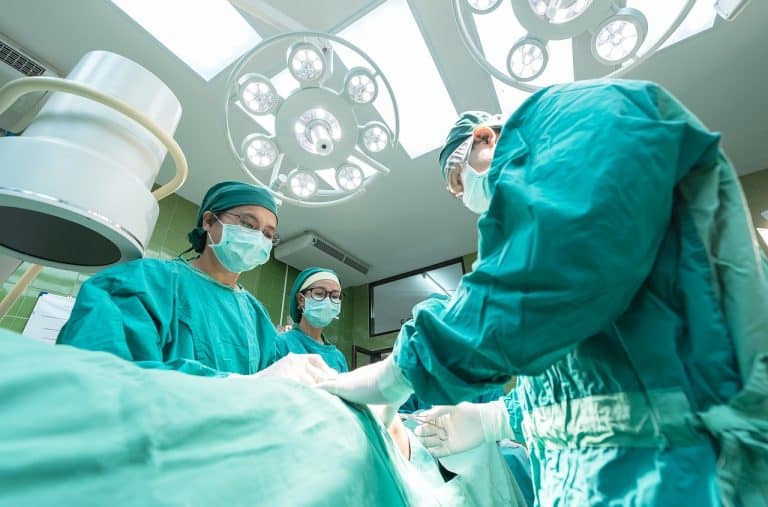The United States healthcare system faces a pivotal transition as demographic shifts create unprecedented demand for surgical procedures. It makes sense that an aging population requires more medical interventions, so giving robots access to the surgeon’s tools could be a potential game-changer. Notably, the critical surgeon shortage is projected to reach 10,000-20,000 professionals by 2036. That said, how will these advanced robotic systems revolutionize operating rooms by augmenting human capabilities while expanding access to life-saving procedures?
Robotically Transforming the Healthcare Industry
Hospitals may rely on robots to address workforce challenges by combining precision technology with artificial intelligence to assist (not replace) skilled surgeons. With the integration of robots, medical teams could perform complex operations more efficiently, particularly in underserved areas where specialist availability remains limited. As the rising concerns about cost and training requirements persist, the growing gap between patient needs and available providers may be mitigated through the strategic deployment of robots in performing surgeries.
The next decade will likely see the healthcare industry’s transformation due to the rise of robots in the hospital setting. By taking on expanded roles in operating rooms nationwide, they can work alongside human surgeons to maintain care quality during this workforce transition. While this technological partnership represents more than just innovation, it has potentially become an essential strategy for preserving surgical access. With America’s healthcare demands intensifying, this fact remains relevant, given the volatile discussions around costs and accessibility.
Independent Surgical Robots
Researchers are bringing the field of robotic surgery into a transformative phase with the development of advanced self-learning capabilities for surgical robots. For years, these machines have assisted human surgeons with recent collaborative work between Johns Hopkins and Stanford University, as an example, as they aimed to enhance the autonomous functions of these machines.
Expanding robotic proficiency across critical surgical skills, like precise suturing and knot-tying, has been a main goal in his technological training system. Secondly, getting robots to complete practical operating room tasks, such as retrieving fallen instruments, is another issue that both Johns Hopkins and Stanford University seek to address.
The creation of this enhanced training system had scientists analyze video footage of robots performing procedures on practice suture pads. In each video frame, the pixel data undergoes conversion into numerical values, which the system then interprets as specific robotic movements and actions. Initially, this data translation process forms the foundation for the machine learning model. From there, robots can acquire and refine surgical techniques without direct human programming.
Research Advances Surgical Technology
Collaborative research between Johns Hopkins, Stanford University as well and other institutions has led to a groundbreaking advancement in surgical robotics. What this demonstrates is that artificial intelligence can enhance precision in medical procedures. Specifically, they combined imitation learning with advanced machine learning architectures similar to those powering modern language models. Using this innovative approach, scientists successfully trained the da Vinci Surgical System to master three essential surgical skills:
- Needle manipulation
- Tissue handling
- Suturing techniques.
Remarkably, this training method proved a success, achieving performance levels comparable to experienced human surgeons. The complex process began by analyzing kinematic data rather than language. Specifically, it translated robotic joint angles and movements into mathematical representations that the system could interpret and replicate. According to researchers, an extensive library of surgical footage was utilized, captured by wrist-mounted cameras,, on da Vinci robotic arms during actual procedures worldwide.
This vast dataset, comprising thousands of archived operations, was performed by over 50,000 trained surgeons, which provided the foundation for the robot’s learning through observational imitation. The team addressed known precision limitations in robots, developing a novel solution. Ultimately, he focused the model on relative spatial relationships rather than absolute positional accuracy.
Benefits of Robots in Accessing Healthcare
This approach not only effectively compensated for inherent system inaccuracies but also maintained the delicate control required for robots’ surgical applications. Furthermore, it’s speculated that widespread improvements in robotic-assisted surgery may follow with these machines successfully performing surgeries. In particular, standardizing techniques and reducing variability between operators are gradually becoming more in demand. The technology developing further has led to the development of self-improving robotic systems that could significantly enhance surgical outcomes.
Even better, advanced technological techniques could become more accessible across global healthcare systems as the demand continues to grow. From what’s seen in the research, bridging artificial intelligence with practical medical applications represents an important milestone. However, clinical implementation will require rigorous testing and validation before doctors start using robots as surgical tools as the norm.








